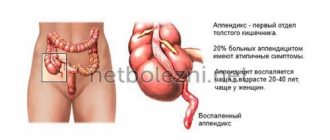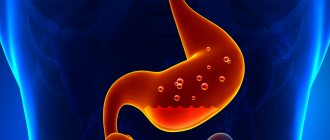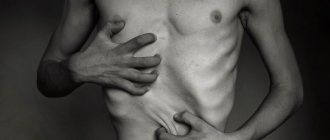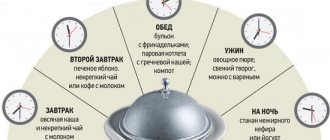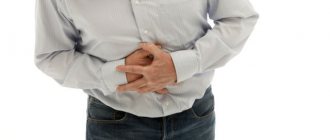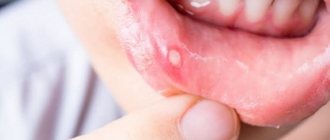Before we begin to understand the symptoms of the disease, let's find out what it is and how it appears. Esophagitis is a whole group of diseases that are completely different from each other in their natural occurrence. But there is something that connects them all - inflammation of the mucous membrane of the esophagus.
Candidiasis is one of the diseases that affects the esophagus and is characterized by the Candida fungus. A very interesting fact is that candidal esophagitis has spread since the widespread use of antibiotics.
Today, many respiratory tract diseases are treated only with antibiotics, but these diseases can occur for various other reasons. So, we have a general idea of candidal esophagitis, let’s define the symptoms of the pathology.
Causes of the disease
Fungus of the genus Candida as a cause of candidal esophagitis
As we have already said, the causes of this disease can be very different. The fungus candidiasis esophagitis can function on almost all tissues of the human body. One of the most common causes is disruption of the body’s gastrointestinal tract, or more precisely, its tissue component.
In most cases, this occurs after long-term treatment with antibiotics, which kill almost all bacteria, thereby creating favorable conditions for the development of candidiasis on the mucous membrane of the esophagus.
There is also a high likelihood of developing candidal esophagitis in those who suffer from alcohol addiction or simply drink alcohol very often. Those who often take hormonal drugs, and in particular, contraceptives, are also at risk of this disease.
As you can see, in most cases, candidal esophagitis occurs as a result of taking certain medications (antibiotics, birth control pills). This does not mean that you need to stop taking these drugs, just be careful and not get carried away with them. If it is possible to replace antibiotics with another remedy, then it is better to do so.
If you can do without birth control pills and choose another type of protection, then do that too. In any case, this is not a complete list of the causes of this disease, since they can be very diverse and often you cannot even predict this disease.
Esophageal candidiasis: modern methods of diagnosis and treatment
Opportunistic infections, including mycoses of the digestive organs, represent a pressing problem of modern gastroenterology. Diagnosis and treatment of esophageal candidiasis in some cases are associated with certain difficulties.
Pathogenesis
Yeast-like fungi of the genus Candida are single-celled microorganisms measuring 6-10 microns. Under various conditions, they form blastospores (bud cells) and pseudomycelia (threads of elongated cells). Yeasts of the genus Candida are widespread in the environment: in soil, drinking water, food products, on the skin and mucous membranes of humans and animals. The outcome of contact with yeast-like fungi of the genus Candida is determined by the state of the individual’s antifungal resistance system. In most cases, such contact forms transient candidiasis. At the same time, in persons with disturbances in the antifungal resistance system, contact can form as a persistent carriage and as candidiasis.
Disease of esophageal candidiasis is predetermined by the presence of pathogenic factors of Candida spp. In particular, fungal cells can attach to epithelial cells (adhesion), and then through pseudomycelium penetrate into the mucous membrane and even “closed” systems (invasion) and cause necrosis of the tissues of the macroorganism.
The listed pathogenicity factors are naturally counteracted by numerous factors:
- mucosal integrity and mucopolysaccharides;
- antagonism of yeast-like fungi and bacteria of the digestive tract;
- activity of digestive enzymes and fungistatic action of nonspecific humoral factors such as lysozyme;
- function of cells of the phagocytic series - polymorphonuclear leukocytes;
- specific antifungal humoral response (implemented by the synthesis of specific anti-candidal antibodies by B cells).
Defects in the antifungal resistance system described above are factors contributing to the occurrence of candidiasis.
1. Physiological immunodeficiencies (childhood, old age, pregnancy).
2. Genetically determined (primary) immunodeficiencies.
3. AIDS.
4. Oncological diseases, especially against the background of radiation and chemotherapy.
5. Allergic and autoimmune diseases, especially during treatment with glucocorticosteroids.
6. Diseases of the endocrine system, primarily diabetes mellitus, autoimmune polyendocrine syndrome, hypothyroidism, obesity, etc.
7. Dysbiosis during antibiotic therapy.
8. Chronic “debilitating” diseases, nutritional status disorders.
9. Transplantation of organs and tissues.
The introduction of fungi of the genus Candida is more often observed in areas represented by multilayered epithelium (oral cavity, esophagus) and much less often in single-layered epithelium (stomach, intestines).
In practice, the clinician has to deal primarily with candidiasis, the frequency of which in healthy individuals reaches 25% in the oral cavity, and in the intestines - up to 65–80%.
Diagnostics
The scope of examination of the digestive organs for candidiasis includes the study of anamnesis and clinical picture, assessment of routine clinical tests, endoscopic examinations, mycological (cultural, morphological and serological) and immunological tests.
Esophageal candidiasis occurs in general patients in 1-2% of cases, in patients with type 1 diabetes mellitus - in 5-10% of cases, in patients with AIDS - in 15-30% of cases.
Local risk factors include burns, achalasia, diverticulosis, and esophageal polyposis.
Typical complaints are dysphagia, odynophagia, and retrosternal discomfort, but a latent course also occurs.
Symptoms of esophageal candidiasis can disrupt the act of swallowing, which in turn leads to malnutrition and a significant decrease in quality of life.
Indications for endoscopic examination to exclude esophageal candidiasis are: risk group, clinical signs of esophagitis and verified candidiasis of other localizations.
Among the variety of visual signs of esophageal candidiasis, three groups of typical changes can be distinguished:
1. Catarrhal esophagitis. Diffuse hyperemia of varying degrees and moderate swelling of the mucous membrane are observed. A characteristic endoscopic sign is contact bleeding of the mucous membrane, sometimes with the formation of a delicate, whitish (“web-like”) coating on the mucous membrane.
2. Fibrinous (pseudomembranous) esophagitis. White-gray or white-yellow loose plaques are observed in the form of rounded plaques with a diameter of 1 to 5 mm, protruding above the brightly hyperemic and edematous mucous membrane. Contact vulnerability and hyperemia of the mucous membrane are noticeably expressed.
3. Fibrinous-erosive esophagitis. Characteristic is the presence of dirty gray “fringed” plaques in the form of “ribbons” located on the crest of the longitudinal folds of the esophagus. With instrumental separation of such plaques, the eroded mucous membrane is exposed. The mucous membrane of the esophagus is extremely vulnerable, swollen and hyperemic.
Similar endoscopic changes can be observed with reflux esophagitis, Barrett's esophagus, herpes esophagitis, flat leukoplakia, lichen planus, burn or tumor of the esophagus, therefore the diagnosis of esophageal candidiasis is based on endoscopic examination and laboratory examination of biopsy materials from the affected areas.
The “standard” for diagnosing candidiasis of the mucous membranes is the detection of pseudomycelium of Candida spp. during morphological examination (cytology and histology). The detection of individual yeast cells, as a rule, indicates candidiasis, and the detection of pseudomycelium allows us to confirm the diagnosis of candidiasis.
The cultural mycological method is based on sowing biomaterials of mucous membranes on Sabouraud's medium. The advantage of this method is the possibility of species identification of fungi of the genus Candida and testing the culture for sensitivity to antimycotics. A cultural study of biomaterials of the mucous membranes with determination of the type of pathogen becomes strictly necessary in case of recurrent candidiasis or resistance to standard antimycotic therapy.
Complications
Esophageal candidiasis is dangerous due to its complications: stricture, bleeding, perforation and dissemination of mycotic lesions.
The development of esophageal stricture is noted in 8–9% of patients with candidal esophagitis. More often they are localized in the upper or middle third of the thoracic esophagus and cause permanent dysphagia.
Chronic bleeding is caused by contact vulnerability of the mucous membrane, it is low-intensity, and leads to anemia.
The clinical picture of esophageal perforation is characterized, in addition to intense pain, by the development of pneumomediastinum and subcutaneous emphysema in the neck area.
Treatment
The management plan for patients with esophageal candidiasis must include diagnosis and correction of underlying diseases, other foci of candidal infection, rational antifungal therapy and immunocorrection. It is also necessary to exclude malignant tumors, X-ray of the lungs, fibrocolonoscopy, additionally for men - ultrasound of the prostate gland, additionally for women - ultrasound of the mammary glands and pelvis with consultation of a gynecologist.
esophageal candidiasis
- polyene antimycotics (amphotericin B, nystatin and natamycin);
- azole antimycotics (ketoconazole, fluconazole, itraconazole, voriconazole, posaconazole);
- echinocandins (caspofungin, anidulafungin, micafungin).
The goal of treatment of candidiasis of the mucous membranes of the upper digestive tract is to eliminate symptoms and clinical and laboratory signs of the disease, as well as to prevent relapses.
It must be emphasized that for esophageal candidiasis, local therapy is ineffective. In patients with severe odydysphagia who are unable to swallow, parenteral therapy should be used.
Despite the high effectiveness of fluconazole in patients with a persistent immunodeficiency state, the likelihood of relapse of esophageal candidiasis is high. It must be remembered that a relapse-free course of candidiasis can only be achieved in patients with complete correction of the background condition. For example, in AIDS, relapses of candidiasis stop only with successful antiretroviral therapy, which ensures a decrease in the viral load and an increase in the number of CD4 lymphocytes.
Head endoscopy department
Novopolotsk city hospital
Kozhushkevich A.Yu.
Symptoms of the disease
Feeling like something is stuck with candida esophagitis
During candidal esophagitis, the patient constantly has the feeling that food is stuck or that it is difficult to pass into the esophagus. Sometimes this can also occur with painful sensations. Patients with this disease may complain of symptoms such as vomiting, persistent nausea and heartburn.
Doctors cannot immediately make an accurate diagnosis, since the symptoms are very similar to stenosis or a tumor. During a procedure such as esophagoscopy, you can see that a white film with plaque appears on the mucous membrane, which is often yellow or gray.
If these films are separated, erosions will remain on the surface of the mucous membrane, and if the disease is already at more severe stages, bleeding may occur. The doctor should take this film and examine it under a microscope to get the detailed status of the given disease in the patient.
Let's look at the symptoms in more detail so that everyone can detect this disease in time and make an appointment with a doctor. In fact, there are many reasons for this disease. This is because our body is a favorable environment for the appearance and development of fungus. One of the most important and common causes is a disruption in the production of microorganisms living in the digestive tract.
Antibiotics, which not only fight the disease, but also kill a large number of beneficial bacteria, can lead to such a disruption of the microflora. There is also a greater predisposition to candidal esophagitis in those who consume alcohol excessively, smoke for a long time, and are constantly nervous. Sometimes this disease is caused by certain contraceptives. The main symptoms of candidal esophagitis:
- The patient has a fever that is not caused by a cold, flu or other illness of a similar nature.
- Feeling of pain when swallowing food or saliva. Mild pain in the mouth may also occur.
- The patient complains of constant heartburn, nausea that comes and goes, and vomiting.
- Sometimes patients feel as if there is some object, a foreign body, in their mouth.
If you are experiencing any of the above symptoms, contact your doctor immediately to prevent the disease from developing in the early stages.
Acute esophagitis: symptoms
The clinical picture of acute esophagitis depends on the degree of damage to the mucous membrane. Catarrhal forms are often asymptomatic; sometimes the patient experiences painful passage of hot or cold food through the esophagus (odynophagia). With more severe damage (usually a burn), severe pain occurs, a burning sensation behind the sternum with irradiation (spread) to the neck, back, dysphagia, belching, heartburn, hypersalivation. With hemorrhagic and erosive esophagitis, vomiting of fresh food mixed with blood occurs, melena (blood in the stool). In case of infection (diphtheria, scarlet fever), fibrin films may be present in the vomit. In the most severe cases of acute esophagitis (phlegmonous, necrotic), shock develops. Body temperature depends on the underlying disease, and with perforation (rupture) of the esophagus and the development of mediastinitis, it rises to febrile levels (over 38 degrees).
Treatment of candidal esophagitis
Candida under a microscope
Currently, there are many methods for treating various diseases. This disease is characterized by some difficulties in treatment. Sometimes the recovery process can take a long time, since not all methods are effective for one person.
It also sometimes happens that certain medications or procedures can lead to a number of serious side effects. Therefore, doctors approach the treatment of Candida esophagitis with great caution. Usually the patient is in the hospital under the supervision of a doctor. He is prescribed a number of medications, a special diet, and in severe cases, a hunger strike for several days.
Nutrition can also occur through a tube, but this is also in already complicated cases. The diet implies the exclusion of all foods that can damage the mucous membrane of the intestinal tract. These include alcohol, fatty foods, sweets, coffee, everything spicy and hot. In addition, cigarette lovers should give up their bad habit during treatment. For more effective treatment, sit on water for a couple of days or eat only fruits and vegetables.
1.What is esophagitis and its causes?
Esophagitis is an inflammation of the mucous membrane of the esophagus
– a tube through which food passes from the throat to the stomach. If left untreated, esophagitis can be very uncomfortable, causing problems with swallowing, ulcers and scarring on the esophagus. In some cases, esophagitis leads to a condition called Barrett's esophagus. Barrett's esophagus, in turn, is one of the risk factors for the development of deadly esophageal cancer.
Causes of esophagitis
Esophagitis develops due to infection or irritation of the esophagus
. The infection may be viral, bacterial, fungal, or caused by diseases that weaken the immune system. Esophagitis can be caused by infections:
- Candida
. This is a fungal infection of the esophagus caused by the same fungus that often causes vaginal yeast infections. Candidiasis develops in the esophagus when the immune system is severely weakened, such as in people with diabetes or HIV. Antifungal medications are usually helpful in treating this type of esophagitis. - Herpes.
Like candidiasis, this viral infection can develop in the esophagus when the body's immune system is weakened. Treated with antiviral drugs.
The irritation that leads to esophagitis can be caused by any of the following:
- GERD, or gastroesophageal reflux disease;
- Vomit;
- Operation;
- Medicines, such as aspirin and other anti-inflammatory drugs;
- If you take the tablets with too little water or take them just before bed;
- Ingestion of toxic substances;
- Hernias;
- Radiation injuries, which can be caused by radiation therapy during cancer treatment.
A must read! Help with treatment and hospitalization!
3.Diagnosis of the disease
In addition to a general examination and finding out the symptoms that bother you, your doctor may perform several special tests to diagnose esophagitis:
- Upper endoscopy
. During this procedure, a long flexible tube with a light source (endoscope) can be used to view the esophagus. - Biopsy
. A biopsy involves taking a small sample of tissue from the esophagus and then examining it in a laboratory. Typically, tissue for a biopsy is taken during an endoscopy. It does not hurt. - X-ray examination with preliminary swallowing of barium solution
. Barium coats the lining of the esophagus and appears as white areas on x-rays. This procedure allows doctors to detect any abnormalities in the esophagus.
About our clinic Chistye Prudy metro station Medintercom page!
What can you do with esophagitis?
Dishes that are allowed in the diet for esophagitis should not linger long in the intestines: it is important that they are easily digestible and do not irritate the mucous membrane of the esophagus and stomach.
In addition, it is necessary that the products have a “soft” effect on the stomach, have enveloping and antacid (anti-heartburn) properties. The diet for esophagitis should contain a large amount of vitamins and microelements.
List of permitted products:
- dried or yesterday's white and gray bread, dry biscuit, dry cookies;
- vegetarian soups made from pureed vegetables, small varieties of pasta, boiled cereals;
- vermicelli;
- boiled and pureed porridge (buckwheat, rice, semolina, oatmeal) in water or milk with water 50/50;
- potatoes, zucchini, cucumbers, cauliflower, beets and carrots, grated, green peas infrequently and in small quantities;
- soft-boiled eggs, steamed egg white omelettes;
- low-fat milk and fermented milk products, pureed cottage cheese, non-acidic sour cream;
- mild and unsalted cheeses;
- lean boiled meats and poultry, minced meat and steamed dishes (meatballs, cutlets, soufflé, meatballs);
- some boiled offal (tongue, liver);
- lightly salted caviar, boiled sausage without fat (dietary, dairy, doctor's);
- milk, cream, fruit sauces, bechamel without frying flour;
- vanillin, cinnamon, garden herbs in small quantities;
- marmalade, marshmallows, marshmallows, honey, meringue;
- butter, ghee, refined vegetable oil;
- weak tea, coffee with milk, rosehip decoction, juices and compotes from sweet fruits and berries;
- bananas, pears, melons, apricots and other sweet fruits, as well as jelly, jellies and mousses made from them;
- low-fat varieties of river fish, chopped or boiled.
Candidiasis of the esophagus. Causes and symptoms of esophageal candidiasis
Experienced gastroenterologists will tell you that recently the incidence of esophageal candidiasis has increased. The main cause of esophageal candidiasis is a disorder of the immune system, and the disease is usually observed in the above risk group. Also, one of the main reasons is simply the avalanche use of antibiotics - people think that it is better to simply relieve pain and take medications without doctor’s recommendations.
Of the total number of patients in gastroenterology, patients with esophageal candidiasis occur in about 2%.
Symptoms of esophageal candidiasis:
- You have pain in the abdomen, in its upper part;
- Frequent vomiting and constant nausea;
- It hurts you to swallow, and each time it becomes more difficult to do it;
- You have pain in the chest area.
